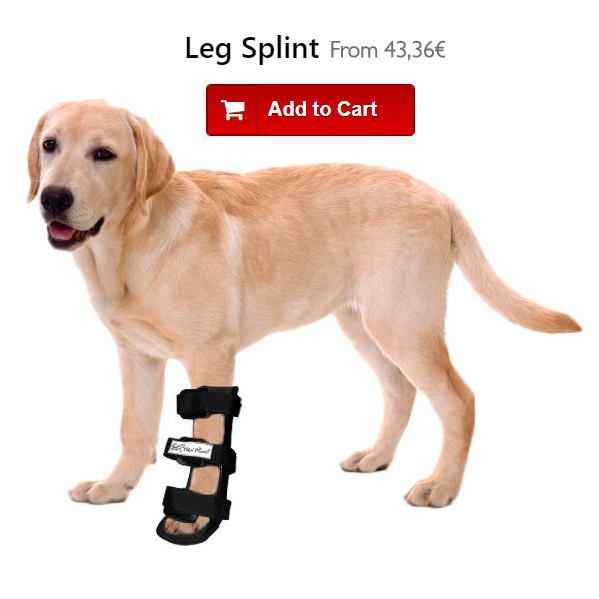The brachial plexus is a group of interlinked nerves that runs from the thoracic and cervical areas of the spinal chord. Its purpose is to supply the upper limbs with sensation and movement.
When the nerves are “torn”, which is caused by a sudden pull being exerted on the limb, this is known as brachial plexus avulsion. The injury is normally caused by accidents, falling from a height and being stepped on. It can also be caused by a fracture.
 How can you recognize this in your animal?
How can you recognize this in your animal?
This depends a lot on how serious the avulsion is. You will see one or several of the following clinical signs:
- Inability to bear weight on the affected limb.
- Inability to maintain the limb in the correct position (proprioceptive deficit).
- Severe muscle atrophy (this will be visible a week after the accident).
- In serious cases there is absence of sensation in the limb.
- The pupil of the eye on the same side as the affected limb may contract (Horner’s Syndrome) due to injuries to neighbouring nerves that run to the eye.
How is it diagnosed?
The vet will base a diagnosis of brachial plexus avulsion on the animal’s clinical history (falls, accidents,...), visible clinical signs and electrophysiological examinations. In serious cases where it is possible that the spinal cord has also been damaged, an RMI scan or CAT scan may be necessary.
How is it treated?
There are two types of treatment, depending on the animal’s condition.
1. Conservative
- Aggressive physiotherapy: this must always be supervised by a professional. Find more information about physiotherapy for pets here: The importance of rehabilitation.
- Dressings/splints to protect the limb and maintain it in the correct position.
- Electrical stimulation: this has made great progress in recent years and now it is even possible for the owner to apply the treatment at home, thanks to TENS kits.
2. Corrective surgery
This can be used in some mild cases for partial avulsions. A tendon transfer or carpal arthrodesis (immobilisation of the carpus) can be performed.
What kind of progress can be expected?
If sensation is present in the limb, evolution is usually favourable. If sensation is absent, the evolution is usually unfavourable. In some cases, the limb needs to be amputated in order to avoid injuries and self-mutilation or the use of rigid splints.


